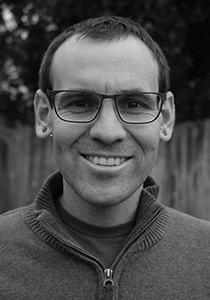Citation

It is an honor and a distinct pleasure to present Joel Scheingross as the recipient of the 2019 Luna B. Leopold Award. Through his multifaceted research, Joel has made fundamental advances in the understanding of sediment transport and incision by steep mountain rivers. The breadth of Joel’s expertise is remarkable: His work encompasses detailed and carefully executed fieldwork; designing and running clever scaled laboratory experiments; and the testing, development, and refinement of relevant theory. Luna Leopold would approve. Joel’s monitoring of fluvial processes in steep streams has taught us much about the relative contributions of form drag, relative roughness, channel slope, and grain hiding in determining initiation of motion thresholds. Following up this initial effort, Joel designed and executed a groundbreaking experimental study on the relative contributions of bed load and suspended-load abrasion in bedrock channels, demonstrating that suspended load can dominate river incision by abrasion during large floods in steep rivers. Unsatisfied with just two fundamental contributions, Joel turned to the problem of waterfall erosion, again integrating novel experiments, theoretical developments, and field observations. Joel’s work documents and quantifies waterfall retreat accomplished not by erosion on the waterfall face or by undermining due to scour in plunge pools or seepage erosion, but rather by the formation and downward drilling of new plunge pools upstream of the last. Importantly, this work indicates that commonly observed morphologies in bedrock channels may well have an autocyclic origin and are not necessarily tied to local variations in substrate properties or driven by changes in boundary conditions, as is often envisioned. Finally, Joel gives selflessly to our community, and even as a student Joel was proactive in mentoring younger students. As the Leopold Award recipient, Joel stands as a role model to other young scientists beginning careers in the study of surface processes.
—Kelin Whipple, Arizona State University, Tempe
Response
Thank you to Kelin for the lovely citation and to my nominators for their support. I am beyond humbled.
My scientific and academic worldview has been shaped by many dedicated mentors, inspiring lab mates, and comradery from the greater Earth and Planetary Surface Processes (EPSP) community. As an undergraduate, I enrolled in Bill Dietrich’s geomorphology class on a whim, clueless as to how it would dictate my future. When Bill had an open research position, I jumped at the opportunity. Despite fieldwork of rainy days with evenings in a cabin home to bats and mice, I became captivated by sediment motion and the evolution of steep landscapes.
With encouragement from Bill and the Berkeley geomorphology community, I found my way to Caltech where Mike Lamb helped me dig into the mechanics of bedrock erosion while patiently teaching me the intangibles that make for good science: identifying compelling research questions, designing testable hypotheses, and clearly communicating results. These skills served me well when I shifted my focus to organic carbon cycling in my postdoc at GFZ Helmholtz Centre Potsdam. For this, I was fortunate to have Niels Hovius at my side, who encouraged me to think big, blend ideas between disparate fields, maintain work–life balance, and develop my skills broadly within the Earth sciences.
To those of you I have been lucky enough to overlap with, to collaborate with, to interact with at meetings, at campus visits, or virtually, and to the EPSP community at large: Thank you. There are far too many of you to name individually, but it’ll suffice to say that I would not be here today without your encouragement, guidance, and friendship. Our conversations and your contributions have inspired me just as much as, if not more than, my formal advising. You make me proud to call EPSP home, and I share this award with all of you.
—Joel Scheingross, University of Nevada, Reno
Citation:
(2020), Scheingross receives 2019 Luna B. Leopold Young Scientist Award, Eos, 101, https://doi.org/10.1029/2020EO137068. Published on 31 March 2020.
Text © 2020. AGU. CC BY-NC-ND 3.0
Except where otherwise noted, images are subject to copyright. Any reuse without express permission from the copyright owner is prohibited.
